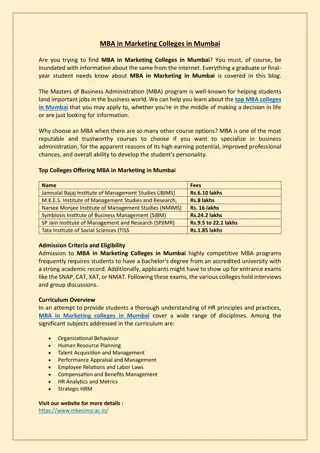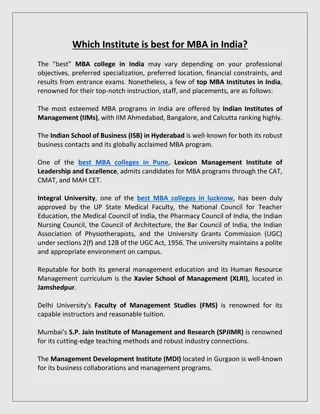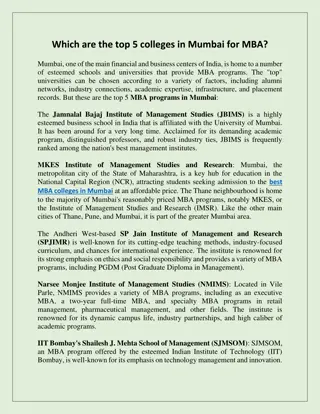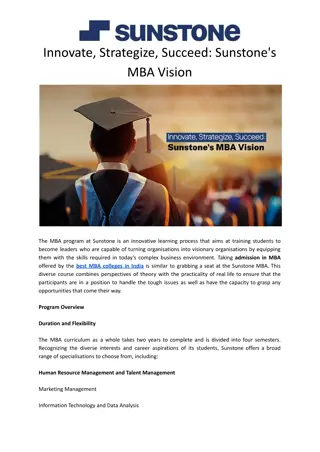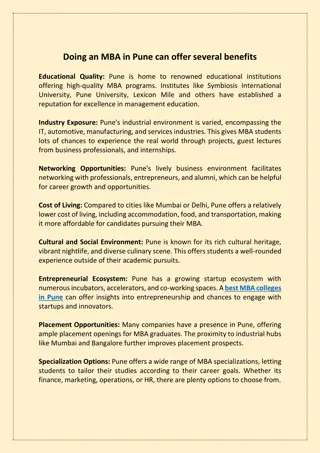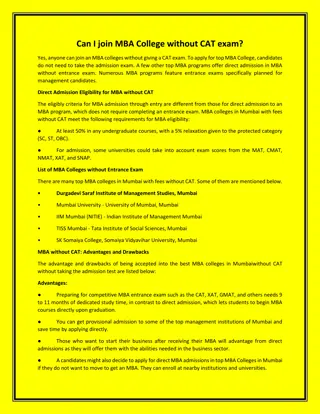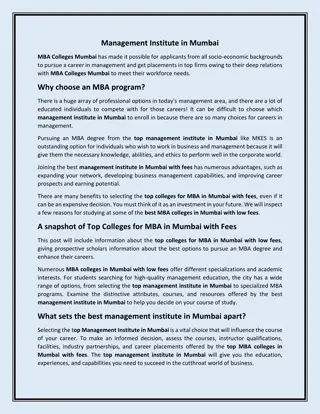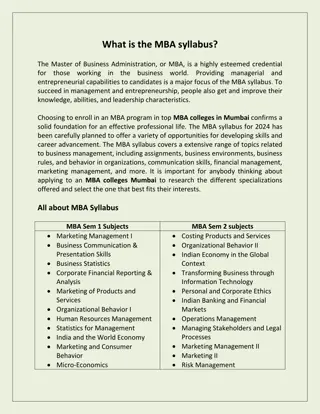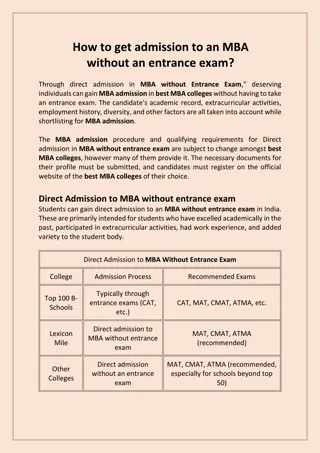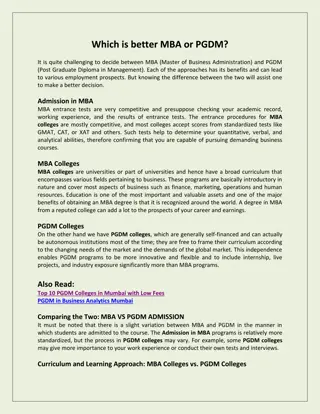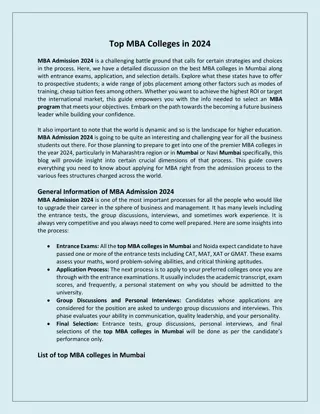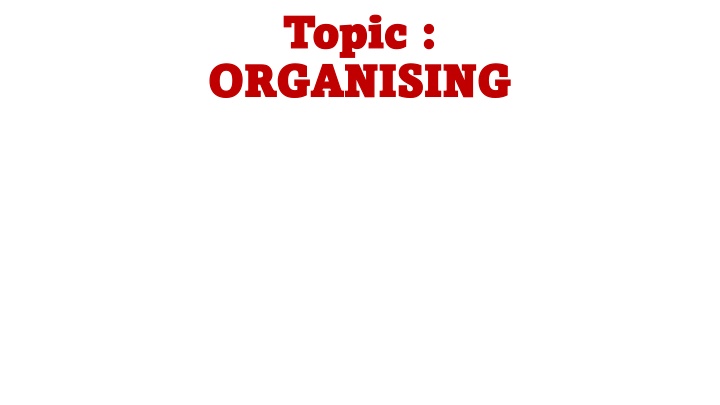
Fundamentals of Organising in an Organization
Explore the fundamentals of organising within an organization, including differentiation, integration, and the nature of organising. Learn how organising involves identifying work, delegating tasks, and fostering effective collaboration for achieving shared objectives.
Download Presentation

Please find below an Image/Link to download the presentation.
The content on the website is provided AS IS for your information and personal use only. It may not be sold, licensed, or shared on other websites without obtaining consent from the author. If you encounter any issues during the download, it is possible that the publisher has removed the file from their server.
You are allowed to download the files provided on this website for personal or commercial use, subject to the condition that they are used lawfully. All files are the property of their respective owners.
The content on the website is provided AS IS for your information and personal use only. It may not be sold, licensed, or shared on other websites without obtaining consent from the author.
E N D
Presentation Transcript
Topic : Topic : ORGANISING ORGANISING
CONTEXT: CONTEXT:- - WHAT IS ORGANISING? FUNDAMENTALS NATURES IMPORTANCES PROCESS CONCLUSION
What is Organising? What is Organising? Organising is the process of identifying and grouping the work to be performed, defining and delegating responsibility and authority and establishing relationships for the purpose of enabling people to work most effectively together in accomplishing objectives.
Fundamentals Fundamentals of of Organising: Organising:- - DIFFERENTIATION: It means that an organization is composed of units that work on specialized tasks using different work methods and requiring employees with unique competencies. INTEGRATION: It means that the various units must be put back together so work is coordinated.
Nature of Organising Nature of Organising: :- - 1. Group of Persons 2. Common Objectives 3. Division of Work 4. Cooperative Efforts 5. Communication 6. Central Authority 7. Rules & Regulations 8. Dynamic Element
Group of Persons: An organization is a group of people working together for the achievement of common objectives. The group may be large or small. An organization is a system of cooperative relationships of two or more persons. Common Objectives: Every organization has a common objectives distinct from personal objectives of the members. The common goal is the basis of cooperation among the members. The objectives of the organization are usually are made explicit.
Division of Work: An organization comes into existence when the total task is divided into the members of the group. Division of work is necessary not only because one individual cannot do all the work but specialization results in efficiency and effectiveness. Cooperative Efforts: The members of an organization are willing to help each other for the achievement of desired goals. Cooperative relationships are stabilized both vertically and horizontally among different units of the organization:
Communication: People who form an organization communicates with each other in order to integrate or coordinate there efforts. The structure must be such that people can perform together efficiently. Central Authority: In an organization, there is a central directing authority which controls the concerted efforts of the group. The chain of authority- responsibility relationships is known as the chain of command.
Importance of Organising: Importance of Organising:- - Facilitates Administration: objectives of an enterprise by providing a framework of coordination and control. It provides a system of authority and network for effective communication. Individual goals can be coordinated towards group goals. A properly balanced organization facilitated both management and operation of the enterprise. Encourages Growth & Diversification: It has enabled organizations to grow and expand to giant sizes. Systematic division of work and consistent delegation of authority facilitate taking up of new activities and meeting new demands. It provides flexibility for growth without losing control over various activities. Achievement of the
Optimum Use of New Technology: It is made through a sound structure manned with competent employees. In addition, Optimum use of technology permits optimum utilisation of human resources. Sound organization ensures that every individual is placed on the job for which one is best suited. Stimulates Innovation & Creativity: It stimulates creative thinking and initiative on the part of employees. It provides for effective management of change and responds favourably to changes in environment. It provides recognition for the professional and the specialist in terms of their achievement.
Encourages Good Human Relations: assignment of right jobs to right person improves job satisfaction and inter-personal relations. Well-defined jobs and clear lines of authority and responsibility ensure good human relations. Ensures Continuity of Enterprise: It provides scope for the training and development of future management. It provides avenues for development and promotions through delegation and decentralisation. Coordination: It facilitates order and cohesiveness in the enterprise. Division of labor, better utility of technology and human talent helps to improve the efficiency and quality of work. Clear channels of communication among the members of the organization leads to coordination.
Process of Organising: Process of Organising:- - 1. Identification of Activities: First step is to determine the tasks that must be performed to achieve the established objectives. Activities and jobs are building blocks of any organization. The activities to be performed depends upon the objectives, nature and size of the enterprise. 2. Grouping of Activities: The various activities are the grouped into departments or divisions according to similarity and common purpose. Such grouping is necessary for the purpose of specialization, coordination and control. It may be grouped on various basis i.e. functions products, territories, customers etc depending on requirements.
3. Assignment of Duties: Groups of activities or departments are then allotted to different positions. Every position is occupied by an individual best suited for it. The assignments of activities creates responsibility and ensures certainty of work performance. The process should be carried down to the lowest levels. It is basically done to avoid duplication lappingefforts. 4. Delegation of Authority: Every individual is given the authority required to carry out the responsibility assigned to him. A chain of command is created through successive delegation of authority. Different positions are linked vertically and horizontally by establishing formal authority. Every individual must know to whom he is accountable and who are his subordinates. of work and over-
Conclusion: Conclusion:- - The important steps involved in the process of are, the determination of objectives, the grouping of activities, assignment of duties to persons, delegation of authority and creating authority relationships.


